“How old would you be if you didn’t know how old you was?”
“Age is a question of mind over matter. If you don’t mind, it don’t matter.”
Those two quotes came from Leroy “Satchel” Paige, one of the most iconic and beloved figures in baseball history. A man who made history long before he ever stepped onto a Major League field. A man whose age, stats, and even origin story remain part of his mystique.
Satchel Paige did not just impress on the mound. He made an impression on the world. Before Jackie Robinson took the field in Brooklyn, Satchel had already spent decades breaking down barriers. He was a legend whose stories stretch beyond box scores and into the heart of American history.
In this article, I share what I learned firsthand. These are the stories behind the man. Stories that reveal how he lived, how he thought, and why he still matters.
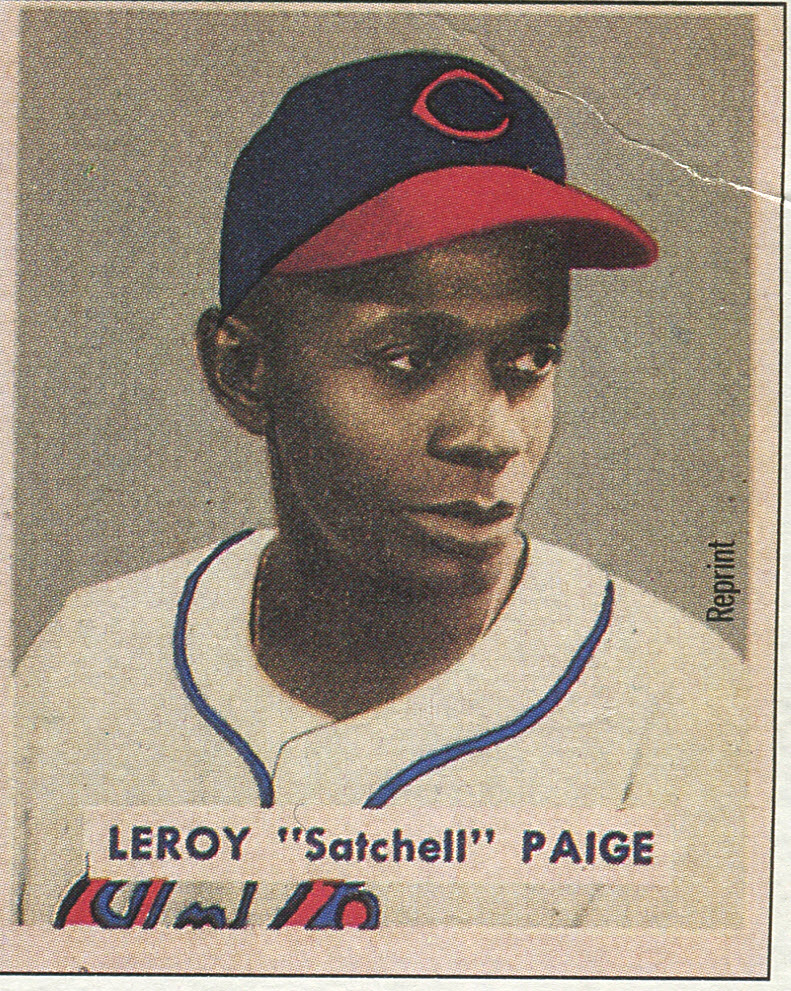
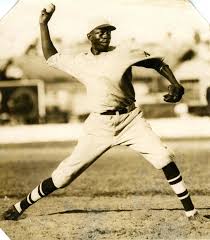
How Old Was Satchel Paige?
To this day, nobody really knows. Baseball once tried to figure it out. They found Satchel’s mother, Mrs. Paige, living in South Mobile, Alabama. When they asked how old her son was, her response was unforgettable.
“I can’t remember if he was my first child or my fourteenth,” she said. She also mentioned that they had hidden his birth certificate inside her Bible, only for their family goat to eat it.
She may not have known her son’s birth year, but she remembered that the goat lived to be 27.
That kind of mystery followed Satchel all his life. It was part of the legend. But more than mystery, it was what he did with his years that defined him.
How He Got the Name “Satch”
Even Satchel’s nickname came with a story. As a young man working as a porter in a hotel, he figured out how to carry more bags by using a pole and some rope. He stacked four bags on the pole at once.
One of the other porters saw him and said, “You look like a walking satchel tree.”
That was it. The name stuck. From then on, he was “Satch.”
From Reform School to the Mound
Satchel had a rocky start. He got into some minor trouble with the law—some larceny, some truancy—and was sent to a reform school. But what seemed like punishment became one of the most important turning points in his life.
He spent five years there and always said they were the best years of his life. That’s where he met Reverend Moses Davis, the man who taught him how to pitch. Reverend Davis taught Satchel to kick his left foot up high and hide the glove behind the arm to block the batter’s view.
Satch credited Reverend Davis for his pitching success. And he almost didn’t make it out. Had he turned 18 while still in reform school, his next stop would have been jail. We may never have heard of him.
But he got out six months before that birthday. And the rest is history.
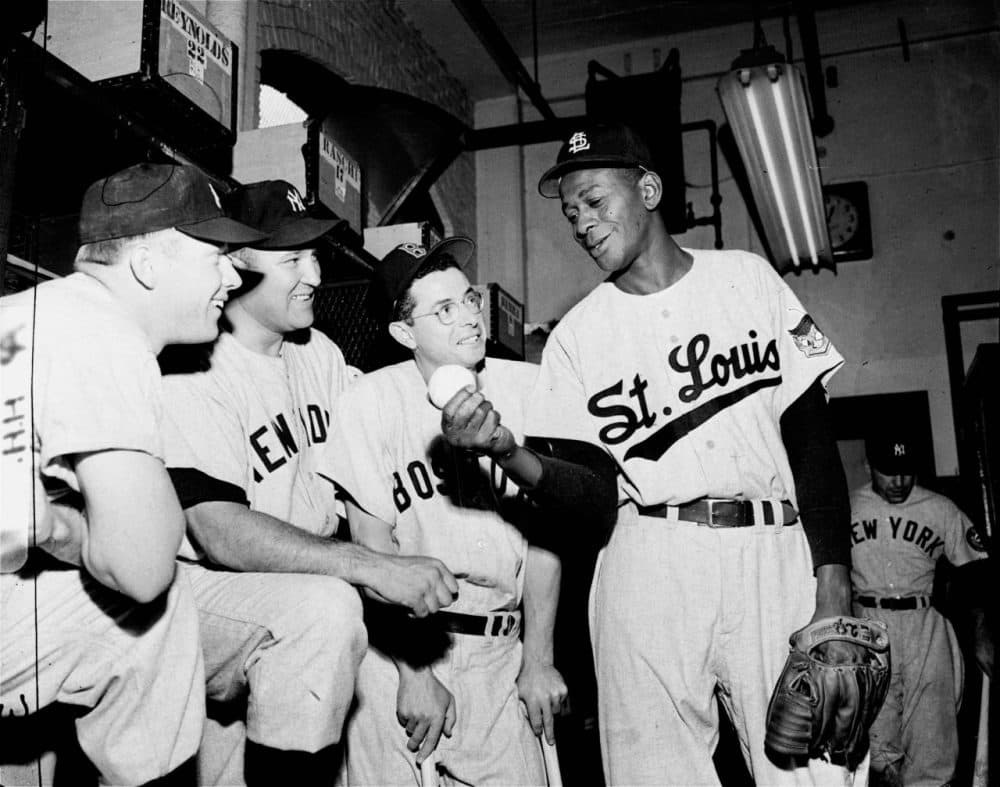
A Career That Spanned the World
At just 18, Satchel went out on the road. He barnstormed across the Caribbean, South America, and the United States. He played against a new team in a new city nearly every day. There were no official records back then, so he kept his own.
By his count, he pitched in over 2,500 games, won 2,000 of them, threw 50 no-hitters, and at least 250 shutouts. One stat we do know is that he pitched 62 consecutive scoreless innings.
And he did all of this before Major League Baseball finally let him in at the age of 42.
How I Met Satchel Paige
In 1977, I was at a league meeting in Springfield, Illinois. We were told a special guest would join us at dinner. That guest was Satchel Paige.
By chance, my father—Jim Burris, one of the best baseball historians I’ve ever known—was seated directly across from Satchel. I sat next to him. What happened that night was magic.
They clicked instantly. Satchel told story after story. My father listened, laughed, and shared his own. Before long, the hotel staff had gathered around, just to hear the two of them go back and forth.
It was like Abbott and Costello. Peaches and cream. Satchel Paige and Jim Burris.
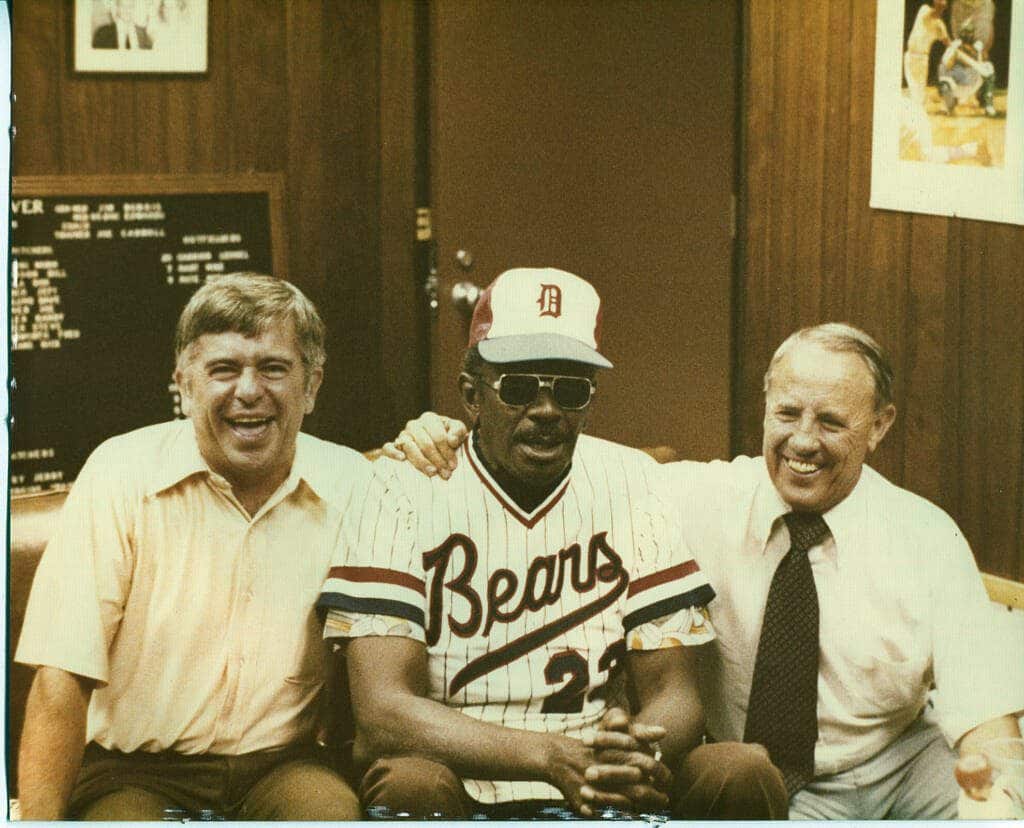
Bringing Satchel to Denver
After that night, we made plans to bring Satchel to Denver for a promotional event. He would pitch batting practice to the media and appear at our stadium.
He had one request: let the reporters step in the box and try to hit off him. Then, win or lose, we would give them a certificate that said, “I got a hit off Satchel Paige” or “I batted against Satchel Paige.”
The media loved it. They started trash talking each other about who would get the best hit. That kind of publicity was priceless.
When Satchel arrived at the airport, my father got out of the car and handed me the keys. “You’re driving. I want to spend time with the man,” he said. That was my version of “Jesus take the wheel.”
A Visit Through Five Points
Satchel directed us through Five Points, a historic jazz neighborhood in Denver. It had seen better days by 1977. We stopped at a gun shop that was also a shoeshine parlor. Without missing a beat, one of the men inside heard his voice and called out, “Hey Satch, how you doing?” without even looking up.
My father said, “Satch, don’t you get it? To them, you’re their Abraham Lincoln.”
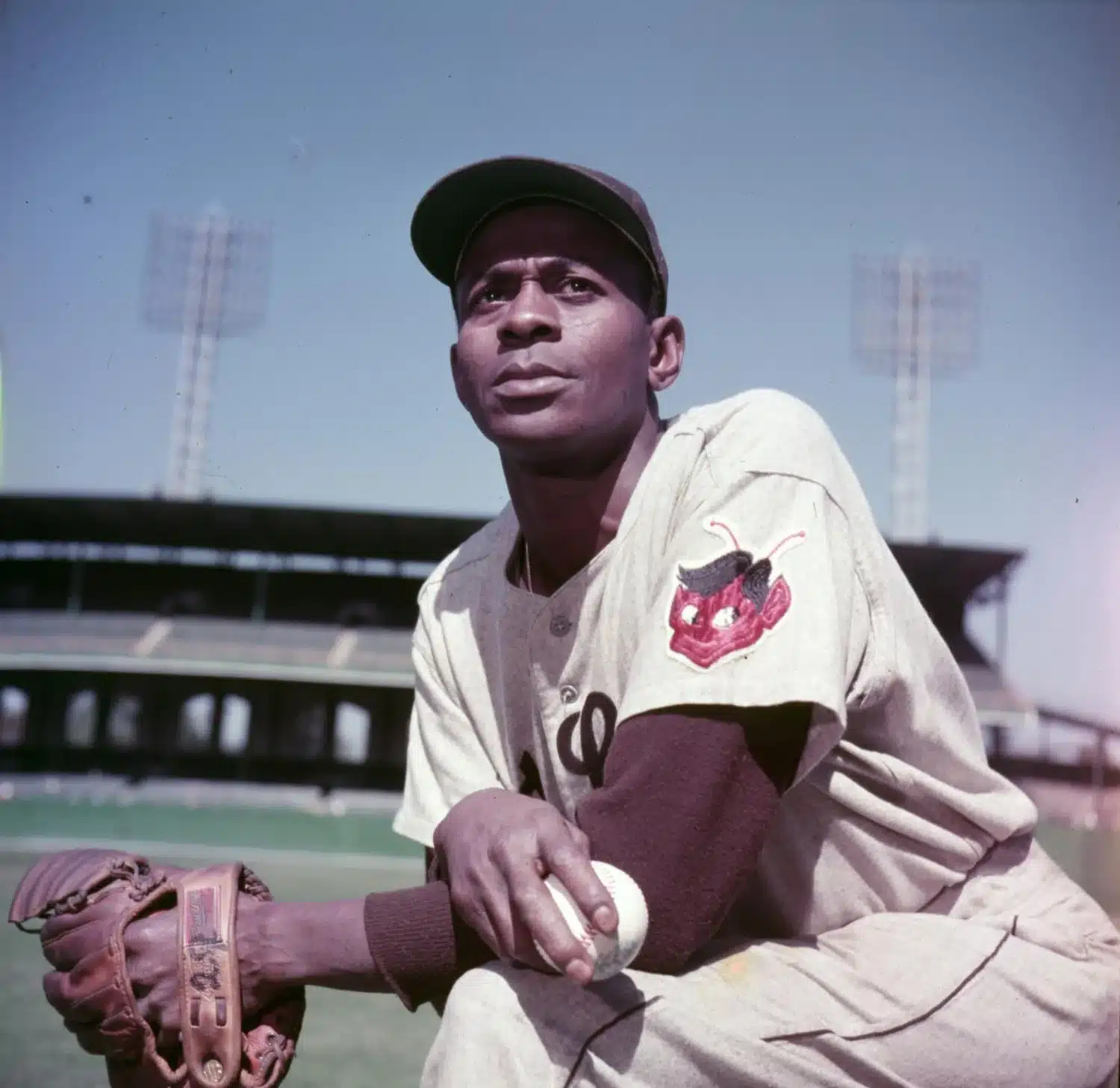
Game Day and Radio Booth Magic
That night, Satchel showed up at the ballpark in a Denver Bears uniform. He signed autographs like it was nothing. The crowd was close to 10,000, on a Tuesday night when we normally had 1,500.
After batting practice, he asked if he could do a little radio play-by-play. Our broadcasters, Mark Holtz and Joe Cullinane, said yes. I still have the full recording.
He talked about pitching with the wind, using the flag to guide your approach. He talked about building a team with balance, not just great starters. He said, “The bullpen wins championships.”
He was sharp, honest, and full of wisdom.
The Night That Followed
That evening didn’t end at the ballpark. We stayed up in my father’s office all night with Satchel and our concessionaire, Kevin McNicholas.
No one went to bed. We talked and listened until the sun came up.
Satchel had a way of including everyone. He asked me questions like, “Who invented night baseball?” I said the Kansas City Monarchs. He corrected me.
“No, we did. When the sun went down, we pulled our cars up to the fences and turned on the headlights.” – Satchel Paige
He challenged me to name a city he hadn’t played in. I couldn’t. He had played everywhere.
He said when they didn’t have bases, they used potato sacks. For home plate, he crushed a Dixie cup and pitched to it with pinpoint accuracy.
The Pitch Names and the Legend
Satchel named every pitch he threw. The Midnight Crawler. The Two Humper. The Backdoor Dodger. And his famous Hesitation Pitch.
He owned the plate, and he owned the story around it too.
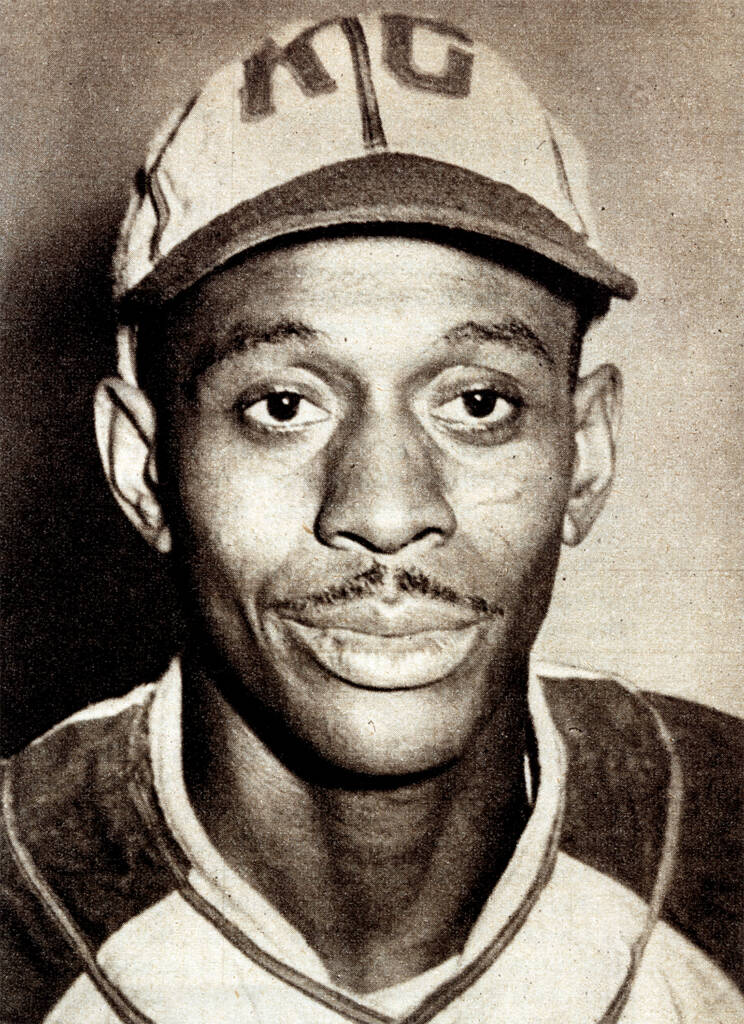
Facing Josh Gibson in 1942
In the 1942 Negro League World Series, Satchel was pitching for the Kansas City Monarchs. Josh Gibson, the best hitter in the Negro Leagues, was up next.
Satch walked two batters just to face him. Then he told Josh:
“I ain’t going to throw you no smoke at your yoke. I’m going to throw you some peas at your knees.”
Three pitches. Three strikes. Gibson never swung.
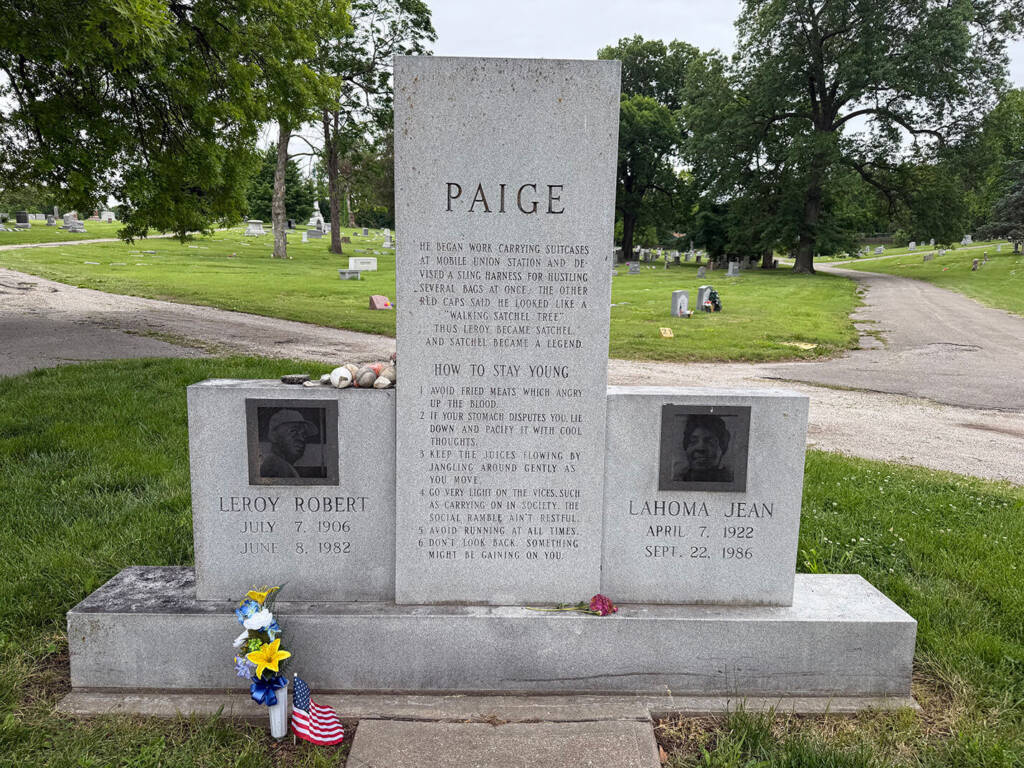
The Grave in Kansas City
I visited Satchel’s grave recently. He’s buried with his wife Loma in Kansas City. There were baseballs and flowers on the ledge.
What struck me most was the engraved list of his rules for living. My favorite was number six:
“Don’t look back. Somebody might be gaining on you.”
Frequently Asked Questions About Satchel Paige and His Legacy
Who was Satchel Paige?
Satchel Paige was one of the greatest pitchers in baseball history. He dominated the Negro Leagues for decades and finally made his Major League debut at age 42. His career included more than 2,500 games, 2,000 wins, and legendary stories that still inspire fans today.
What are Satchel Paige’s “rules for living”?
While Satchel is often quoted for humorous life advice, this post focuses on a specific story where Bob Burris visits Satchel’s grave and sees six engraved life rules. The most memorable was rule number six: “Don’t look back. Somebody might be gaining on you.”
Did Satchel Paige really pitch until he was in his fifties?
Yes. Satchel’s career defied age expectations. He was still pitching batting practice and doing media appearances well into his fifties. His final Major League appearance came at age 59.
How did Satchel Paige get his nickname?
As a teenager working as a porter, Satchel built a contraption to carry more luggage. A coworker told him, “You look like a walking satchel tree,” and the name stuck for life.
Is it true he used a Dixie cup as home plate?
Yes. According to Bob Burris, Satchel once said he crushed a Dixie cup and used it as home plate. His control was so precise, he didn’t need anything more than that.
Did Satchel really strike out Josh Gibson?
Yes, according to Satchel himself. In game two of the 1942 Negro League World Series, he walked two batters just to face Gibson, then struck him out on three pitches without Gibson lifting the bat off his shoulder.
Where can I hear Satchel Paige’s real voice?
You can listen to a rare recording of Satchel Paige calling three innings of live play-by-play from a 1977 Denver Bears game. Just search Bob Burris on YouTube to find the full story.
Why does Satchel Paige matter today?
Satchel broke barriers long before it was popular or even allowed. He entertained, educated, and outperformed. His charisma, control, and character make him one of the most memorable figures in sports history.




